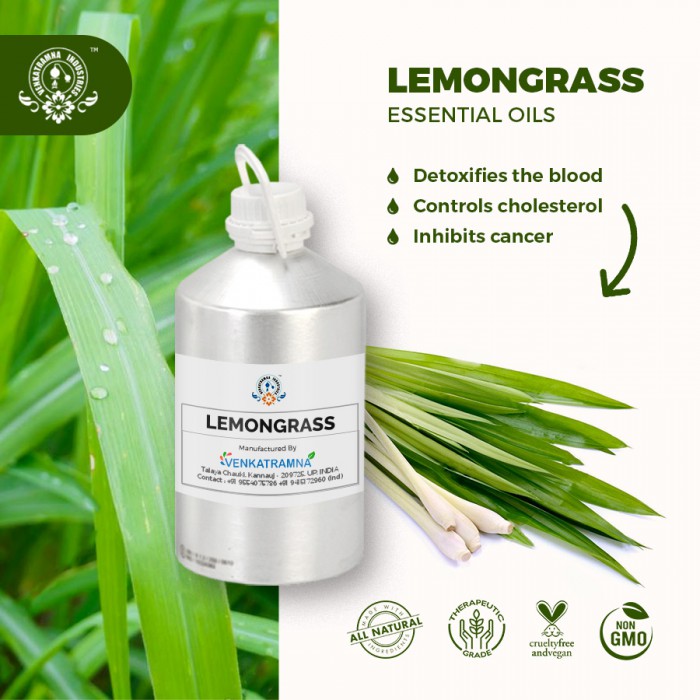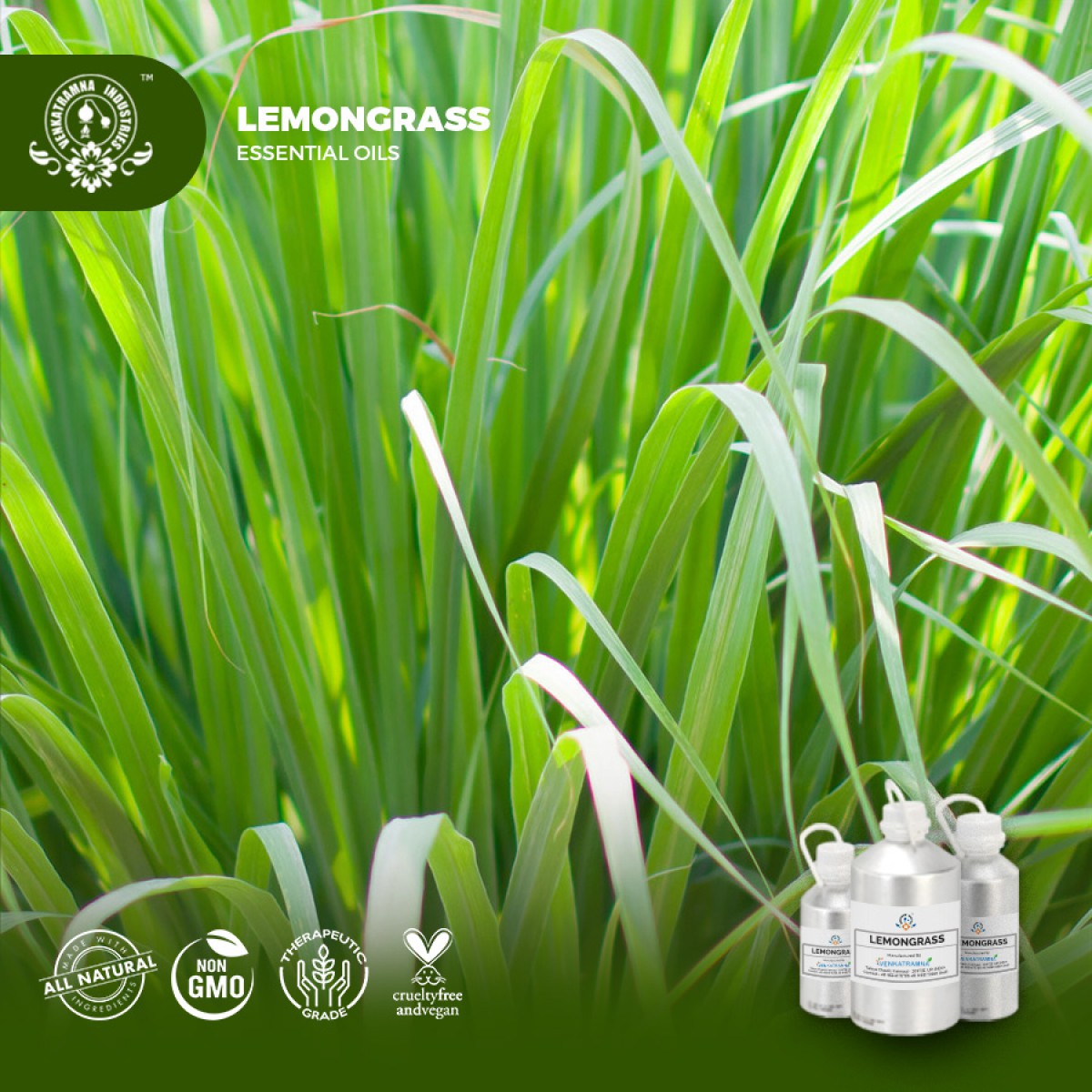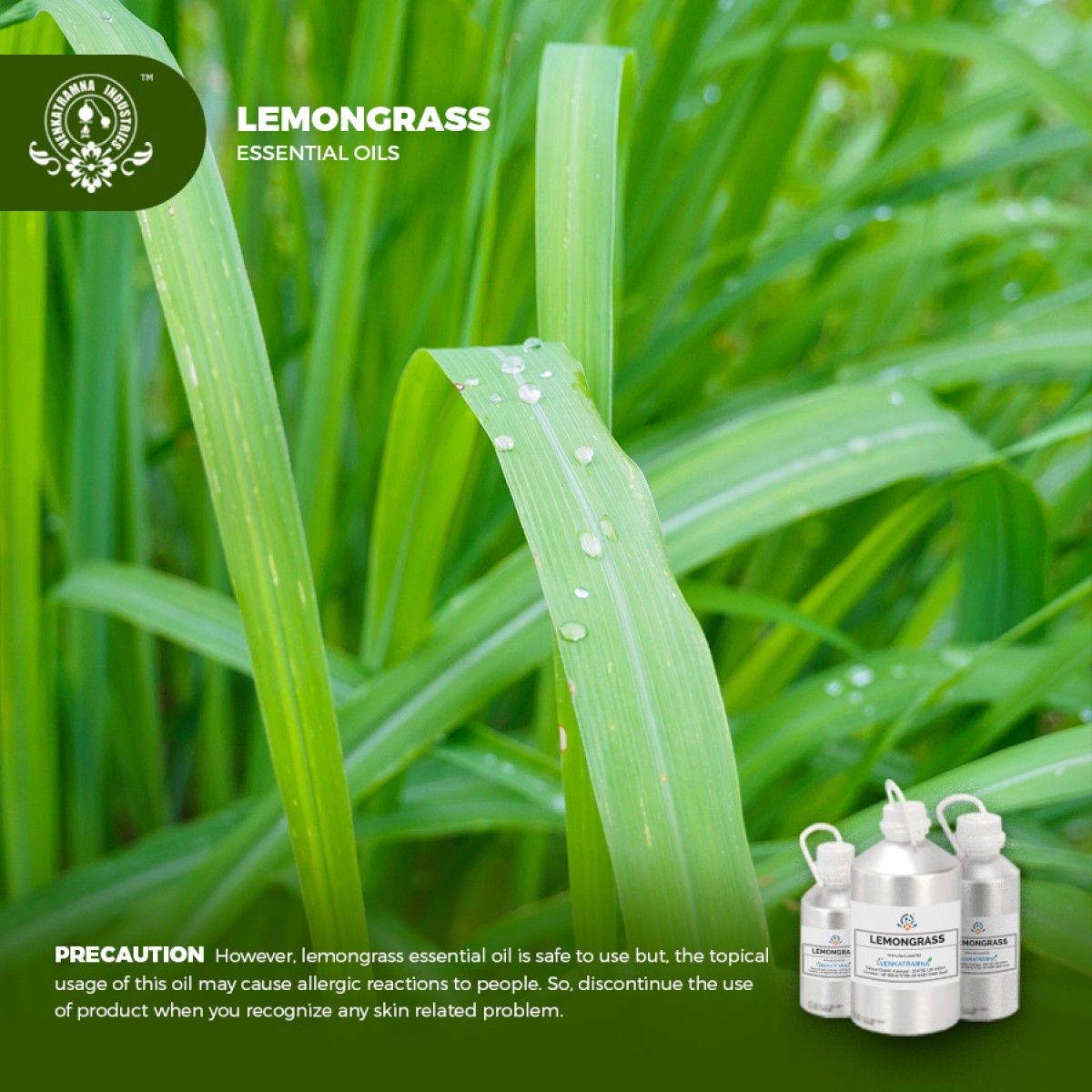Botanical Name: Cymbopogon flexuosus Nees ex Steud Common name: Lemon grass Read More
|
Botanical Name: |
Cymbopogon
flexuosus Nees ex Steud |
|
Common name: |
Lemon grass |
|
Plant family: |
Poaceae |
|
Genus: |
Cymbopogon |
|
Appearance/Color: |
Dark yellow to
light brown liquid at 22 0C with a Strong odor |
|
Odor: |
The range of organic
lemongrass essential oil is extracted from the wilted leaves of lemongrass
which makes it fresh and citrus in aroma. |
|
Blends With: |
The oil can be
further mixed with coriander, Basil, geranium, tea tree, lavender and cedarwood. |
|
Origin: |
India |
|
Source: |
Leaves |
|
Method of
Extraction: |
Steam Distillation |
Lemongrass has long leaves that
are cut and steam-distilled to produce lemongrass essential oil. Lemongrass oil
is concentrated by preserving the quality and purity. Owing to the strong
aroma, it is recognized as the best remedy for aromatherapy. People externally
use it to kill bacteria. Aches reduction and helps in digestion extends the
points of its benefits.
DISCLAIMER
The complete range of conditions
or methods of use are beyond our control therefore we do not assume any
responsibility and expressly disclaim any liability for any use of this
product. Information contained herein is believed to be true and accurate however,
all statements or suggestions are made without warranty, expressed or implied,
regarding accuracy of the information, the hazards connected with the use of
the material or the results to be obtained from the use thereof. Compliance
with all applicable federal, state, and local laws and local regulations
remains the responsibility of the user.
The FDA has not evaluated the
statements on this website. No claims are made by Venkatramna Industries as to
the medicinal value of any products from vriaroma.com or by us. The information
presented here is for educating our customers about the traditional uses of
essential oils and is not intended to diagnose, treat, cure, or prevent any
disease. You are responsible for understanding the safe application of these products.
If you have any questions, please call or email us for further information.
As per NAHA guidelines, New Directions Aromatics
(NDA) does not recommend the ingestion of essential oils. It is imperative to
consult a medical practitioner before using Essential Oils for therapeutic
purposes. Pregnant and nursing women and those taking prescription drugs are
especially advised not to use this product without the medical advice of a
physician. The oil should always be stored in an area that is inaccessible to
children, especially those under the age of 7.
Lemon grass essential oil is
popularly known to support healthy digestion when used internally. It has
ability to detoxify blood and reduce cholesterol. When applied topically, used
aromatically or taken internally, the uses and benefits of Lemongrass
essential oil are widely diverse and astonishing. Big marketers
also use it to add fragrance to soaps, homemade deodorizers and cosmetics. Lemongrass is
most commonly and traditionally used to relieve digestive issues, reduce bodily
aches, pains, and high temperatures, and eliminate harmful bacteria.
In aromatherapy, lemongrass essential oil is
used to reduce inflammation, relieve headaches, and ease indigestion. Inhaling
the scent of the oil or using the oil topically (mixed into carrier oils, body
oil, and hair and skin products) is said to offer a variety of benefits.
One of the main components of lemongrass
essential oil is citral, a compound found to act as an antimicrobial (a
substance that destroys or suppresses the growth of microorganisms, including
bacteria and fungi). Lemongrass essential oil also contains limonene, a
compound that has ability to reduce inflammation and knock out
bacteria. According to aromatherapy
proponents, lemon grass essential oils may affect a number of biological
factors, including heart rate, stress levels, blood pressure, breathing, and
immune function.
Its antioxidant properties make it effective
in preventing cancer. With a pungent
aroma, Lemongrass essential oil is a favorite for massage, offers
purifying benefits for the skin, and promotes a positive outlook by reducing
stress and relieving from pain.
Inhaling the aroma of lemongrass essential
oil or absorbing it through the skin is said to transmit messages to the
brain's limbic system, a region that influences the nervous system.
The chemical compounds in lemongrass
essential oil make it an advantageous product with insecticidal, anti-fungal,
anti-inflammatory and antiseptic properties. It refreshing aroma removes body
odor. In addition, lemongrass essential oil is
said to act as a natural insect repellent and air freshener. Apart from
all, the oil is broadly used for adding flavors to soups & teas.
COMMON
USAGE
·
Detoxifies the blood
·
Controls cholesterol
·
Inhibits cancer
·
Helps with insomnia
·
Treats respiratory disorders
·
Eliminates body aches
·
Recovers fever
·
Helps curing infections
·
Benefits nervous system
·
Treats diabetes
·
Prevents Rheumatism
·
Uplifts immune system
·
Rejuvenates skin
·
Cures Edema
·
Reduces body odor
·
Kills insects
·
Provides culinary benefits
·
Reduces obesity
Ingredients:
|
S.No |
Key Constituents |
Strength (%) |
|
1 |
Neral |
25.0–35.2 |
|
2 |
b-Myrcene |
5.6–19.2 |
|
3 |
Geranial |
36.7–55.9 |
|
4 |
1,8-Cineole |
0–2.9 |
|
5 |
6-Methylhept-5-en-2-one |
0.1–2.6 |
|
6 |
Geraniol |
0–6.7 |
|
7 |
Limonene oxide |
0–6.4 |
|
8 |
Geranyl acetate |
0.4–1.9 |
|
9 |
Linalool |
0.2-2.0 |
Safety summary
Lemongrass essential oil is safe
to use but, the topical usage of this oil may cause allergic reactions to
people. So, discontinue the use of product when you recognize any skin related
problem. Moreover, avoid using the undiluted solution of lemongrass and keep it
out of reach of children.
Organ-specific effects
·
Irritancy: Causes skin irritation
·
Sensitization: May cause allergic skin reaction
·
Health Hazards (Acute & Chronic):
·
Ingestion of large quantities: Harmful
·
Inhalation: None established
·
Skin Contact: Irritant
·
Eye Contact: Irritant
Systemic effects
·
Acute toxicity:
Oral LD50: ? 5000 mg/kg [Rat]
Dermal LD50: 2000 mg/kg [Rabbit]
Inhalation LC50: None established
·
Carcinogenic/anticarcinogenic potential:
NTP Monograph: Not established
IARC Monograph: Not established
The above effects are based on
evaluation of individual components, the relevancy to the mixture as a whole or
to humans is unknown. Handling of this fragrance that results in inhalation of
fumes, may cause severe adverse health effects.
·
Ecotoxicity: Harmful to aquatic life. May have
long lasting effects.
·
Bioaccumulation: No data available
·
Mobility in soil: No data available
·
Persistence and degradability: No data available
·
PBT and vPvB assessment: No data available
·
Avoid direct exposure into water streams and
ground water sources.





 MSDS-Lemongrass.pdf
MSDS-Lemongrass.pdf




